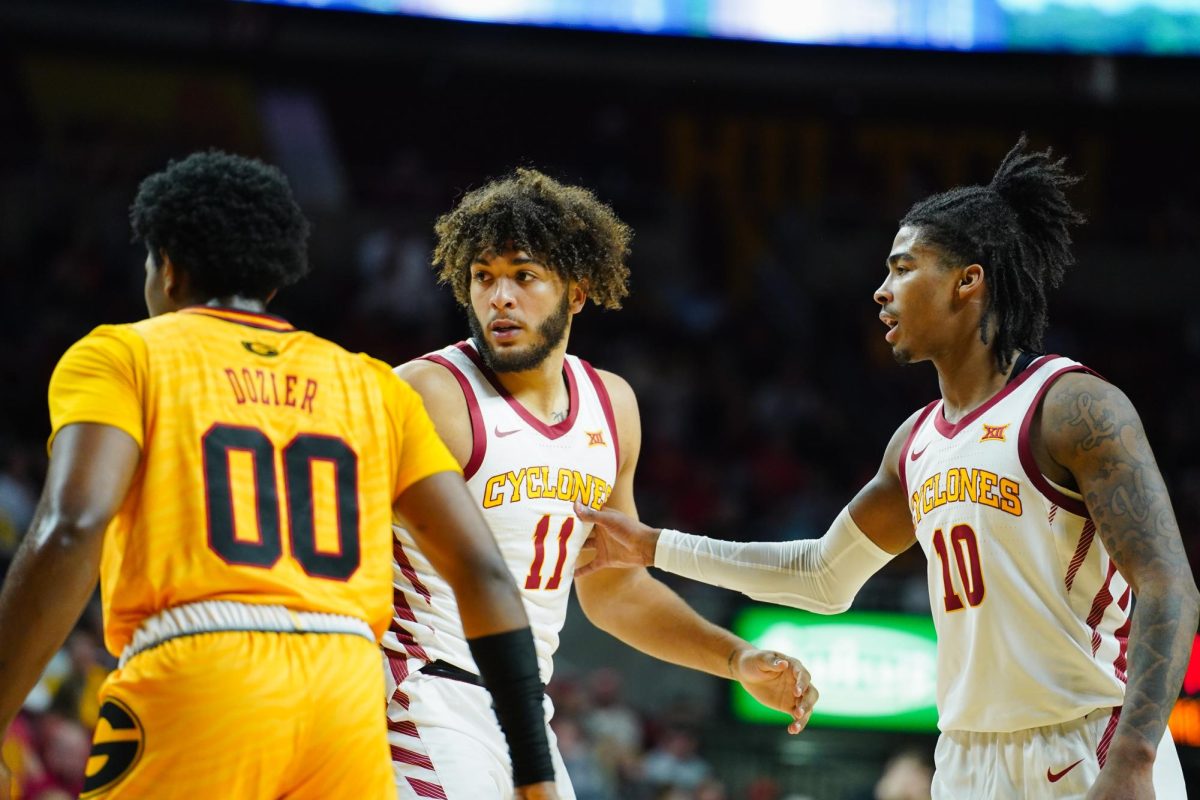VIEWPOINTS: Youth vote’s impact in 2010 uncertain
October 27, 2009
How will ISU students affect the 2010 elections? This is an important question, because in the 2008 election, younger voters made a huge difference in the outcome.
Washington Post political opinion writer E.J. Dionne, Jr., recently asked if the Democrats would lose elections in 2010 because younger voters would not turn out.
“Will the young and hopeful abandon the political playing field to older voters who are angry? That is the quiet crisis confronting President Obama and the Democrats. Left unattended, it could become a formidable obstacle for them in next year’s midterm elections.”
The facts are that Barack Obama and the Democrats did very well among younger voters in 2008. As Dionne puts it, “If only Americans 45 and over had cast ballots in 2008, Barack Obama would not be president.”
The U.S. Census Bureau shows that voters aged 18 – 24 were “the only age group to show a statistically significant increase in turnout, reaching 49 percent in 2008 compared with 47 percent in 2004.”
Here are the facts from a study called “Young Voters in the 2008 Election,” by Pew Research Center for the People & the Press:
Barack Obama got 66 percent of voters under 30; John McCain got 31 percent. It was the largest age disparity in any presidential election since we started exit polling.
Obama beat John McCain 52 percent to 46 percent among voters aged 30 to 44.
Voters aged 45 to 64 split: 50 percent for Obama, 49 percent for McCain.
Voters older than 65 voted for McCain, 53 percent to 45 percent.
The Pew study also tells us that “Young voters are more diverse racially and ethnically than older voters and more secular in their religious orientation. These characteristics, as well as the climate in which they have come of age politically, incline them not only toward Democratic Party affiliation but also toward greater support of activist government, greater opposition to the war in Iraq, less social conservatism and a greater willingness to describe themselves as liberal politically.”
Census Bureau numbers also show that in “voter turnout increases by five million in 2008 presidential election.” There were two million more black voters, two million more Hispanic voters and about 600,000 more Asian voters in 2008, reflecting the overall changing U.S. demographic composition. The number of non-Hispanic white voters remained statistically unchanged from the 2004 election.
There was also a “gender gap” among young voters, with 69 percent of younger women voting Democratic, compared with 62 percent of younger men. By the way, this gender gap favors the Democratic Party in all age groups.
When it comes to political party identification, 45 percent of voters aged 18 – 29 identified themselves as Democrats, compared to 26 percent Republican or 29 percent independent. At least in 2008 the Democrats had an impressive advantage.
In the 2000 election, young voters said they were 36 percent Democratic, 35 percent Republican, an even split.
Younger voters also disapprove of the Iraq war more than older voters, at 77 percent, which is 15 points less support for the war than older age groups.
However, the new data also show that older voters turn out more than younger. In 2008, citizens aged 18 to 24 had the lowest voting rate — 49 percent — while citizens 45 to 64 and 65-plus had the highest voting rates, 69 percent and 70 percent.
Will ISU students and younger voters throughout the United States continue their impressive voter registration and turnout? Or, as some pundits argue, will younger voters in large numbers sit out the 2010 off-year elections? Are younger voters now disillusioned with the direction of politics? Has the Obama “Yes We Can!” optimism been replaced by the reality of politics, which is nasty, partisan and hard?
The bigger question is whether older voters who are “mad as hell and won’t take it anymore” on budget deficits, the national debt, health care reform, government corruption, etc., turn out in record numbers, and whether or not they will vote for Republicans.
The next election could be a real test of how permanent the surge of young voters in American politics really is and whether it has staying power. This is also of importance to young Iowa voters and ISU students.
©2009 Steffen Schmidt is a Proffessor of Political Science at Iowa State University
Reprinted with permission from syndication @ www.insideriowa.com, Iowa’s Internet Magazine
















